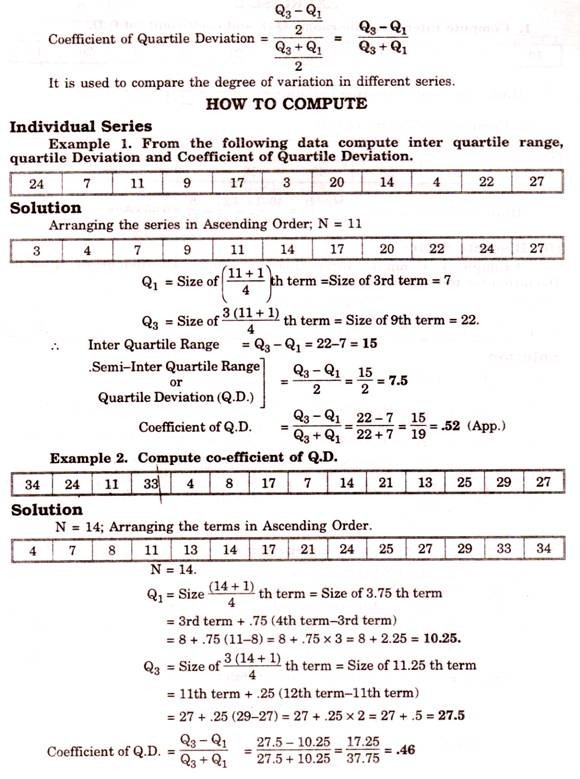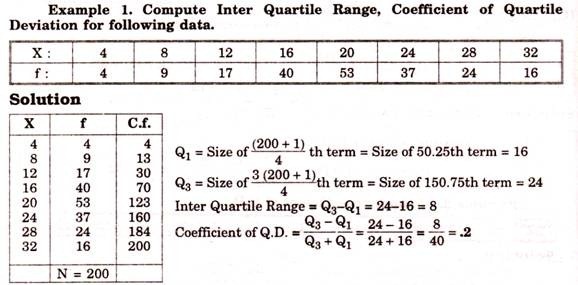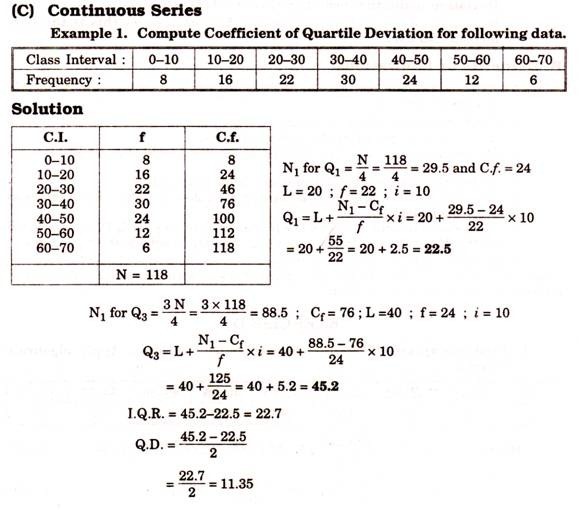A. Quartile Deviation:
In range we calculate by L-S terms. But in this case we leave the first 25% and last 25% terms to avoid the undue importance of extreme values.
So it means that we get Q1 and Q3, if we leave first and last 25% terms.
Thus,
ADVERTISEMENTS:
B. Inter-Quartile Range = Q3 – Q1
And; Semi Inter Quartile Range = Q3 – Q1 Q.D. Also
It is an absolute measure and is known as Quartile Deviation. (Q.D.).
Now as Median is the middle value, Q3 is bigger than Median and median is bigger than Q1, as Q1, Q2 = M and Q3 cover 25, 50 and 75% of the terms.
ADVERTISEMENTS:
The quartile deviation gives the average amount by which two quartiles differ from median. For a symmetrical distribution,
Q3-M = M-Q1; Where M = Median, Q1 = Lower Quartile and Q3 = Upper Quartile.
It means median lies half way on the scale from Q1 to Q3.
Thus for symmetrical distribution we have
Alternatively, for a symmetrical distribution,
Q1=M-QD and Q3=M+QD
Coefficient of Quartile Deviation:
Quartile Deviation is an absolute measure of dispersion. Its relative measure is the coefficient of Quartile Deviation.
(B) Discrete Series:




